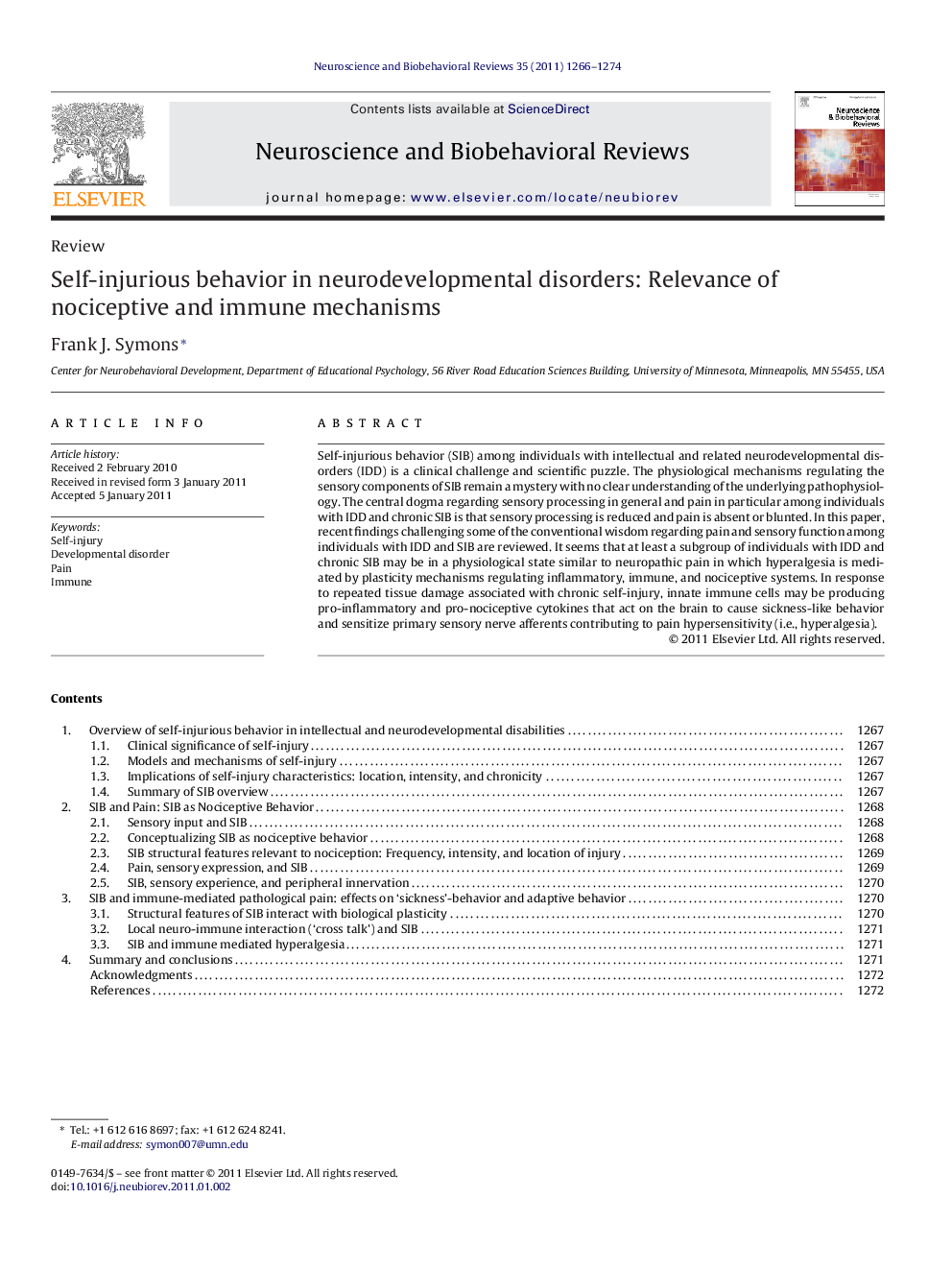| کد مقاله | کد نشریه | سال انتشار | مقاله انگلیسی | نسخه تمام متن |
|---|---|---|---|---|
| 937961 | 924562 | 2011 | 9 صفحه PDF | دانلود رایگان |

Self-injurious behavior (SIB) among individuals with intellectual and related neurodevelopmental disorders (IDD) is a clinical challenge and scientific puzzle. The physiological mechanisms regulating the sensory components of SIB remain a mystery with no clear understanding of the underlying pathophysiology. The central dogma regarding sensory processing in general and pain in particular among individuals with IDD and chronic SIB is that sensory processing is reduced and pain is absent or blunted. In this paper, recent findings challenging some of the conventional wisdom regarding pain and sensory function among individuals with IDD and SIB are reviewed. It seems that at least a subgroup of individuals with IDD and chronic SIB may be in a physiological state similar to neuropathic pain in which hyperalgesia is mediated by plasticity mechanisms regulating inflammatory, immune, and nociceptive systems. In response to repeated tissue damage associated with chronic self-injury, innate immune cells may be producing pro-inflammatory and pro-nociceptive cytokines that act on the brain to cause sickness-like behavior and sensitize primary sensory nerve afferents contributing to pain hypersensitivity (i.e., hyperalgesia).
Research highlights▶ The conventional wisdom regarding chronic self-injury among individuals with severe intellectual impairment associated with neurodevelopmental disorders is that the ability to feel pain is absent or dramatically reduced (hypoalgesia). ▶ Current findings are reviewed challenging the conventional wisdom and suggest paradoxically that a subgroup of individuals may be in a state consistent with hyper- not hypoalgesia.
Journal: Neuroscience & Biobehavioral Reviews - Volume 35, Issue 5, April 2011, Pages 1266–1274